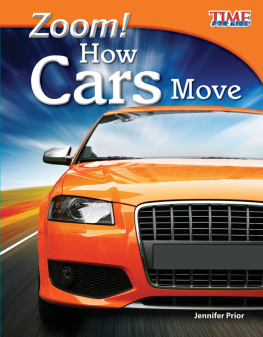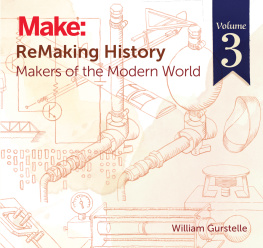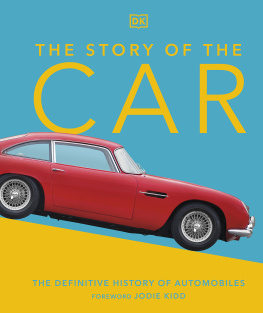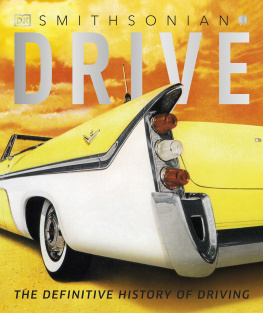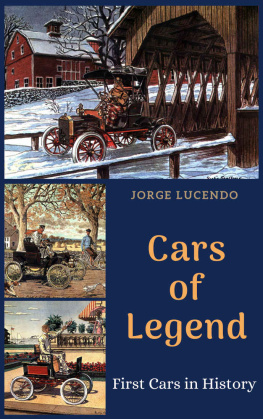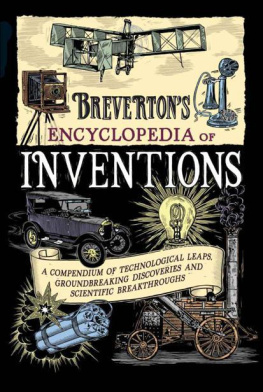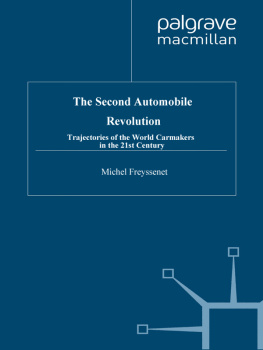

E-book published in 2012 by Encyclopdia Britannica, Inc., in association with Arcturus Publishing Limited, 26/27 Bickels Yard, 151-153 Bermondsey Street, London SE1 3HA. Britannica, Encyclopdia Britannica, and the Thistle logo are registered trademarks of Encyclopdia Britannica, Inc.
ISBN 978-1-61535-645-4 (e-book)
This edition first published in 2010 by Arcturus Publishing
Distributed by Black Rabbit Books
P.O. Box 3263
Mankato, Minnesota 56002
Copyright 2010 Arcturus Publishing Limited
All rights reserved
Planned and produced by Discovery Books Ltd.
www.discoverybooks.net
Managing editor: Laura Durman
Editors: Amy Bauman and Penny Worms
Designer: Ian Winton
Illustrator: Stefan Chabluk
Library of Congress Cataloging-in-Publication Data
Williams, Brian, 1943
Who invented the automobile? / Brian Williams.
p. cm. -- (Breakthroughs in science and technology)
Includes index.
Summary: Looking at some of the major inventions and discoveries shaping our world today, Breakthroughs in Science profiles the research leading up to the discovery (not just profiles of the one or two key players). Each book describes the famous moment and then examines the continued evolution illustrating its impact today and for the future- Provided by publisher.
1. Automobiles-Juvenile literature. 2. Engines-Juvenile literature. 3. Discoveries in science-Juvenile literature. I. Title.
TL147.W5355 2011
629.222--dc22
2010011019
Picture Credits
Audi: cover. Corbis: title page and 33 (PoodlesRock), 18 (Hulton-Deutsch Collection), 24 (Car Culture), 27 (Stefano Bianchetti), 30 (Bettmann), 34 (Bettmann), 36 (Car Culture), 38 (Charles E. Rotkin), 43 (B.S.P.I.). Daimler AG: 17, 19, 20, 21, 22. Getty Images: 6 (Hulton Archive/Stringer), 9 (Science & Society Picture Library), 15 (Science & Society Picture Library), 23 (Science & Society Picture Library), 25 (Science & Society Picture Library), 26 (ISC Archives/Racing One), 35 (Topical Press Agency/Stringer/Hulton Archive), 37 (FPG/Hulton Archive). Honda Motor Co: 41 both images. iStockphoto.com: 40 (J. Horrocks). Library of Congress: 14, 32. Science Photo Library: 10 (Sheila Terry), 12. Shutterstock Images: 7 (Rostislav Glinsky), 16 (Andrea Danti), 31 (EML), 39 (Small Town Studio). Venturi Automobiles/Michel Zumbrunn: 42. Wikimedia Commons: 8 (Practical physics for secondary schools. Fundamental principles and applications to daily life, 1913), 29.
Every attempt has been made to clear copyright. Should there be any inadvertent omission, please apply to the copyright holder for rectification.
SL001447US Supplier 03, Date 0510
Contents
World on wheels
From animal power to engines
Few inventions changed peoples lives more than the automobile. Before the 1700s, all land vehicles, such as carts and carriages, were pulled by animals. Most people could not afford a horse or any sort of road vehicle and had to rely on their legs to carry them to where they wanted to go. Then came two revolutionary inventions: first the steam locomotive, and then, in 1885, the automobile.
From steam to gas
Steam engines were first used in the early 1700s to drive pumps, and later to power ships, trains, and factory machines. Steam was also tried on the road, but it was not very successful. The modern revolution in road travel really began with the invention of the internal combustion engine. Slowly, motorized cars and trucks replaced horse-drawn carriages and ox-drawn carts. Since the first cars appeared on the roads, over one hundred years ago, scientists and engineers have made many more improvements in auto technology, to produce the fast, comfortable, and safe cars we use today. Those changes are ongoing, as companies look to design cars for the future that use lighter materials and run on cleaner, alternative fuels.
Putting the pieces together
Many of the early car pioneers worked alone. They made parts themselves, coming up with and borrowing ideas, and adapting useful, existing technologyfor example, from the steam engine and the bicycle. Pioneers were also quick to adopt new technologies, such as electric batteries or air-filled rubber tires. Often two inventors would have the same idea independently. Some inventors became rich and famous, founding international businesses. Others gave up and were soon forgotten.

Paris, France, in the 1860s. Horse-drawn carts and carriages rattled along city streets, but most people had to walk to wherever they needed to go. But less than 30 years later, cars had joined the Paris street traffic.
THATS A FACT!
In 1900, there were fewer than 25,000 cars in the world. By 1910, that number had risen to about one million. Today, there are more than 600 million. Car manufacturers make more than 40 million cars every year.

In Paris today, the streets are crowded with automobiles. Cities have had to adapt to the caran invention that many people think they could not live without.
Over the years, each new piece of auto technology has been a breakthrough, but when Karl Benz drove his first car in 1885, he started a revolution. The car created new industries, changed the way people spent their leisure time, and altered the landscape. Today, with millions of cars on busy roads across every continent, the cars success has become a challenge to science. Too many cars burn too much gas and give off too much harmful waste. The challenge now is to make new cars that use fuels that are less harmful to the environment. Todays science breakthroughs will create the cars of tomorrow.
The horseless carriage
Steam power
For thousands of years, no human traveled faster than a horse could gallop. After the invention of the first working steam engine in 1712, inventors started to dream of a horseless carriage, a vehicle that could travel under its own steam.
The steam engine
The ancient Greeks made steam toys for fun, but the first person known to put steam power to work was British inventor Thomas Newcomen. His 1712 atmospheric engine pumped water out of mineshafts and tunnels. A fire under a boiler heated water to turn it to steam. The steam entered a cylinder with a piston inside. The piston was forced up and down to work the pump. Similar pump mechanisms had existed for thousands of years, but powering one by steam was new. Other steam engines followed to power factory machines. In the 1760s, Scottish engineer James Watt built a steam engine with a sealed cylinder at both ends, to make it double-actingthe steam forced the piston down as well as up, giving more power. Watt also devised a way to turn the up and down piston motion into a round and round wheel motion.
Inventors show the way
So, if a steam engine could drive a factory machine, why not a vehicle? In 1769, Frenchman Nicholas Cugnot fitted a steam engine to a three-wheeled gun carriage. It trundled along at 3.7 mph (6 km/h) but crashed and was soon forgotten. It was Englishman Richard Trevithick who made the breakthrough. He discovered that using steam at high pressure produced more power. Watt thought this dangerous because the boiler could explode, but Trevithick went ahead in 1801 with his first high-pressure steam carriage, the Puffing Devil. In 1803, he drove his second vehicle from Cornwall to Londonover 300 miles (500 km). Given the terrible roads, it was a miracle of engineering and persistence.
Next page

